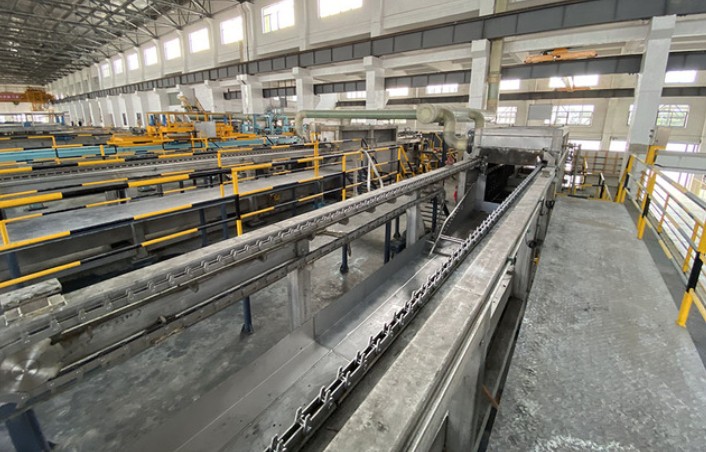NEWS&EVENTS
Home > News&Events > Company news > What are the common anode problems in antimony electrolytic refining?
In the antimony electrolytic refining process, the anode is a key component. Its status and performance have a direct impact on the electrolysis efficiency and product quality. Common anode problems are mainly the following:

Anode passivation: During electrolysis, a dense oxide film gradually forms on the anode surface. This film significantly increases resistance, hindering the proper dissolution of antimony and forcing the cell voltage to rise. Anode passivation can be caused by a variety of factors. Excessive current density is a common cause, accelerating chemical reactions on the anode surface and prompting the rapid formation of the oxide film. Insufficient F⁻ ion concentration in the electrolyte can also contribute to passivation, as F⁻ ions play a crucial role in maintaining anode activity during electrolysis. Furthermore, impurities in the anode material can interfere with the normal electrolysis reaction, leading to passivation.
Uneven dissolution: Poor anode plate quality or improperly set inter-electrode spacing can lead to different dissolution rates in different parts of the anode. Some areas dissolve rapidly, while others dissolve slowly, ultimately forming a jagged or lumpy anode residue. This uneven dissolution can severely impact current efficiency, preventing full utilization of electrical energy. It can also reduce the quality of the cathode antimony, impacting the purity and performance of the product.
Anode slime shedding: When impurity levels (such as arsenic and copper) in the anode plate exceed normal limits, a thick layer of anode slime forms during the electrolysis process. If this layer is not firmly attached, it will fall off in large quantities. This shed anode slime enters the electrolyte, contaminating it and affecting the stability of the electrolysis process. It can also adhere to the cathode, reducing the purity and quality of the cathode product and complicating subsequent handling and processing.